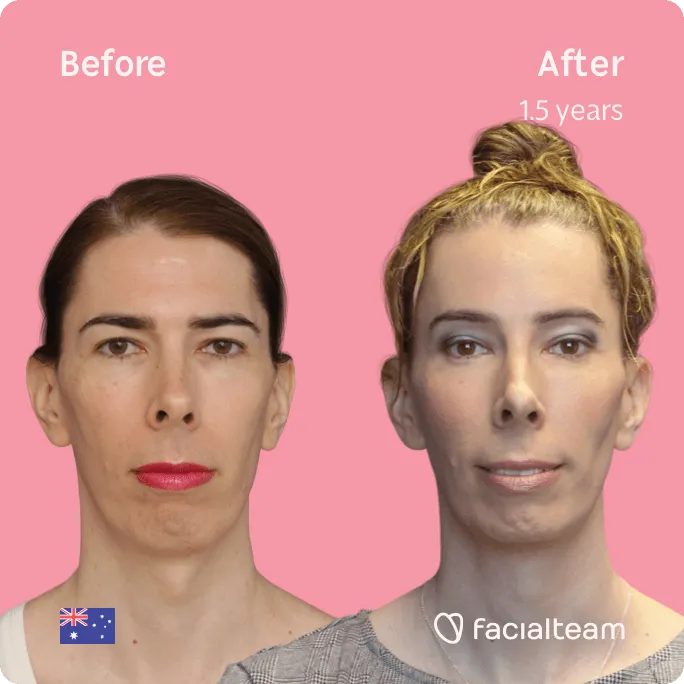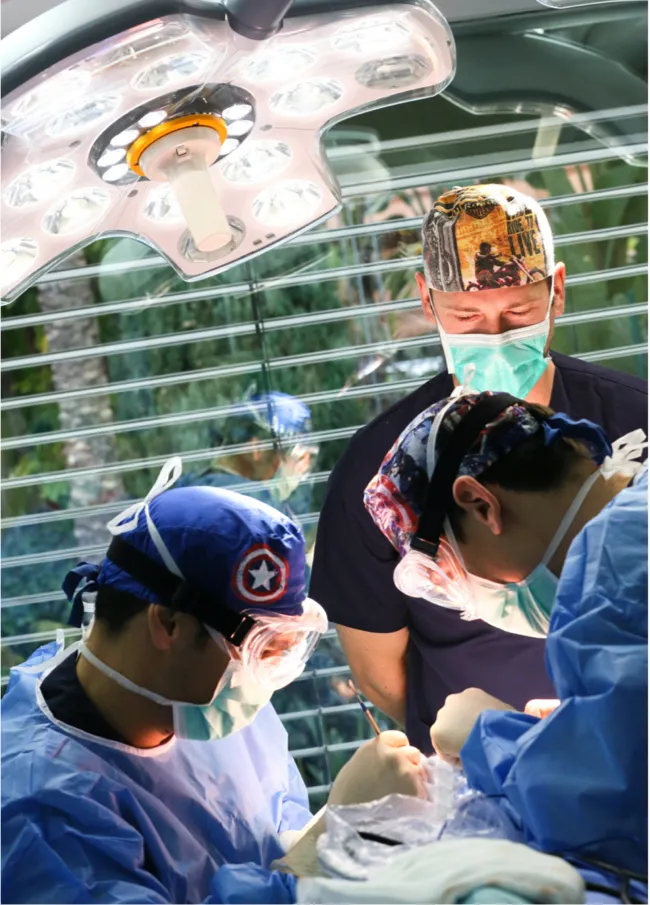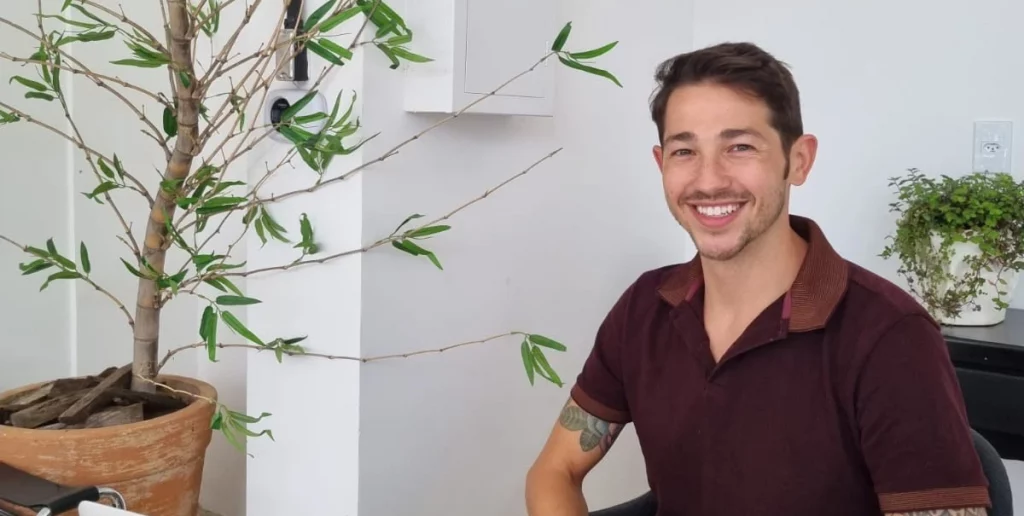Adam’s Apple Reduction vs. Voice Feminization

An Adam’s apple reduction or tracheal cartilage modification is a procedure sought by people of many genders. Although trans women commonly seek this surgery, if you are cisgender and want to change the look of this masculine marker, read more here.
Facial feminization patients often ask how long is best to wait to have voice feminization surgery after an Adam’s apple reduction, or vice versa. And, they’re often unclear about which procedure they should have first.
An Adam’s apple reduction (or Tracheal Shave) is a surgical procedure in which the thyroid cartilage, not to be confused with the thyroid gland, is shaved to minimize the prominence.
On the other hand, voice feminization is usually performed by an ear-nose-throat surgeon and makes changes to the length and space between the vocal cords.
Our experts share advice on how long to wait between a Adam’s apple reduction and voice feminization and we break down the order of the two surgical procedures.
What is the Adam’s apple?

The name of this typical characteristic on masculine throats actually originates from a bible story: Adam took a bite from an apple that got stuck in his throat. Hence, the term Adam’s apple.
The Adam’s apple however has nothing to do with your body processing food, it actually is part of your vocal system and is the cartilage which protects the underlying, sensitive vocal cords.
When your body changes during puberty, various changes in your physical appearance take place. One of these changes for people assigned male at birth (AMAB) typically includes the size of the Adam’s apple. The growth of the Adam’s apple takes place in the larynx, which is part of your vocal system. The front of the thyroid cartilage that surrounds the larynx grows a more outwards protrusion, resulting in the prominence on the neck known as the Adam’s apple.
Do women have an Adam’s apple?
Most women do not have a protruded Adam’s apple, hence, the Adam’s apple is typically considered a masculine facial feature.
The growth of the larynx is stimulated during puberty by an increased amount of testosterone. Since feminine people usually don’t experience this type of hormonal change, they do not develop bigger Adam’s apples. The modification in puberty creates both a deeper voice and a larger thyroid cartilage that protects the vocal cords, resulting in the protruding point, typical of many male necks.
Girls experience changes in their larynx size and voice during puberty as well, however, for most, the development isn’t as big. People assigned female at birth (AFAB) normally don’t have a significantly large Adam’s apple, although some may be more visible than others.
Adam’s Apple Surgery explained
Surgery to the trachea itself should never be attempted, since this would pose the risk of damaging the vocal cords or even causing breathing problems.
Only the most prominent tip of the thyroid cartilage on the trachea, known as the Adam’s apple, can be modified safely.
The appearance of the Adam’s apple can be significantly reduced without compromising the structural integrity of the trachea. Complete removal of the excess cartilage isn’t always safely possible as this may affect the structures which stabilize the vocal cords.
Saga


Our surgeons shave the Adam’s apple in an anatomically safe way by employing diamond burs. These are very effective for sculpting the cartilage without causing any damage to the adjacent soft tissue, including the lower part of the trachea where the delicate vocal cords are attached.
To avoid highly visible scarring, we make the incision higher up and hidden in a fold under your chin, preventing obvious scarring and adhesions between the thyroid cartilage and the overlying tissue layers. During the post-op period, it is recommended to use Silicone gels and cosmetic treatments which help to improve the appearance of scars caused by Adam’s apple surgery.
Watch this 3D animated video below to get an even better understanding of how an Adam’s apple reduction is performed.
Is it possible to do a full Adam’s Apple Removal?
The size of the Adam’s apple varies from person to person, some people have larger larynxes then others. Plastic and maxillofacial surgery techniques offer reliable ways to minimize your Adam’s apple within safe parameters. However, it’s not often possible to make the Adam’s apple totally flat or remove it.
To protect the trachea, only the most prominent tip of the thyroid cartilage should be modified during an Adam’s apple shaving procedure. This allows for a significant reduction in size of the Adam’s apple without compromising the structural integrity of the trachea and vocal cords.
Remember, people of all genders have Adam’s apples, so removing the adam’s apple completely is neither necessary nor desirable. Unfortunately, there is no way to effectively reduce the Adam’s apple without surgery.
Does Adam’s Apple Reduction change my Voice?
Under normal circumstances, a tracheal shave surgery does not change your voice. However, there have been cases in which Adam’s apple reduction surgery has resulted in changes to people’s voices.
Changes to the voice after Adam’s apple surgery may be due to the fact that the safe anatomical parameters were not respected, resulting in a weakening of the voice box. Vocal differences may be temporary and might require vocal therapy, which is customary before and after voice feminization surgery in any case. Nevertheless, if you are a professional or artist that depends on your voice, it is important to be aware of possible changes resulting from changes of the tracheal shave.
Voice Feminization Surgery explained
Vocal Folds Shortening and Retrodisplacement of the Anterior Commissure surgery is known as voice feminization surgery or VFSRAC. This technique is unique in that it more precisely modifies masculine vocal folds to mimic those of feminine voices by removing 1/3 of the vocal folds membrane and internal tissue.
This surgery involves no surface skin incisions as it is performed through the oral cavity. VFSRAC offers the potential to naturally increase the base voice frequency, often desired by trans women who seek a permanently feminized voice.
Adam’s Apple Surgery or Voice Feminization, which comes first?
Facialteam and Yeson Voice Center joined together to establish a protocol and mutual philosophy regarding this frequently asked FFS question.
In the patient’s best interest, the Adam’s apple reduction should ideally be performed first as our specialists believe that voice surgery will be more stable if there is no work done in the area after voice feminization.
Also, during FFS surgery, or any other procedure under anesthesia, a breathing tube is inserted into the throat, which requires more delicacy if the vocal cords have been operated on.
So, the ideal order when having an Adam’s apple reduction and voice feminization surgery is to begin with surgery on the Adam’s apple. After a tracheal shave you should wait a minimum of three months before undergoing voice feminization surgery.
Can I have Adam’s Apple Reduction after Voice Feminization Surgery?
If you have already had Voice Feminization Surgery you can still undergo Adam’s apple surgery. However some additional precautions should be taken in these cases.
Make sure that your FFS surgeon and anesthesiologists are aware you’ve had voice feminization surgery long before your planned Adam’s apple reduction. Wait a minimum period of six months after voice feminization surgery before having your Adam’s apple shave.
As an additional measure, you may request that an extra small tube is employed to avoid pressure on the voice box during surgery.
Still have questions about Adam’s Apple Reductions and Voice Feminization?
We highly recommend booking a consultation with Facialteam so that one of our surgeons can clarify any doubts you may have about either procedure.
The first step is to speak with an experienced specialist who is able to evaluate the need of an Adam’s apple reduction or any other procedures that could help give your face a more feminine appearance.
Speak with an Expert FFS Surgeon
Would you like to know more about combining an Adam’s apple reduction with voice feminization or have other questions about facial feminization surgery?
We offer free consultations for all patients seeking advice on FFS Surgery.
Key takeaways: Adam’s apple reduction and voice feminization
- A tracheal shave should ideally be performed at least 3 months prior to voice feminization surgery. If you plan to have voice surgery first, you will be required to wait at least 6 months before having an Adam’s Apple reduction.
- The breathing tube used should be smaller than average if you have had voice surgery already.
- When speaking with the surgeon about your Adam’s apple reduction, express preference for endoscopic access. Avoiding a direct approach to the thyroid cartilage will prevent visible scarring.
- Ultrasonic diamond burring is used to safely minimize the Adam’s Apple size, while protecting the attachment area of both vocal cords.
- Voice feminization surgery does not involve external skin incisions (intraoral approach), so you will not have any visible scars after this procedure.
- Voice surgery ideally is the last step in your gender affirmation journey in order to safeguard your voice result. This could be compromised if you have surgery in the same area too soon.
Adam’s apple reduction: before and after photos
Take a look at some of our Adam’s apple reduction before and after photos to get a realistic idea of the results you can expect from this surgery.
Marilyn


Malin


Ella








